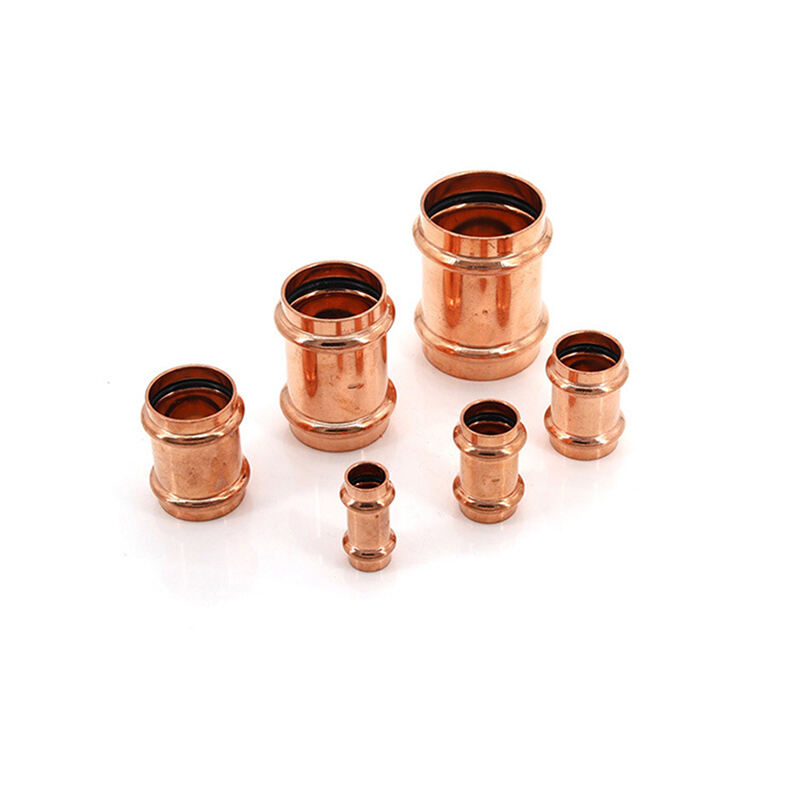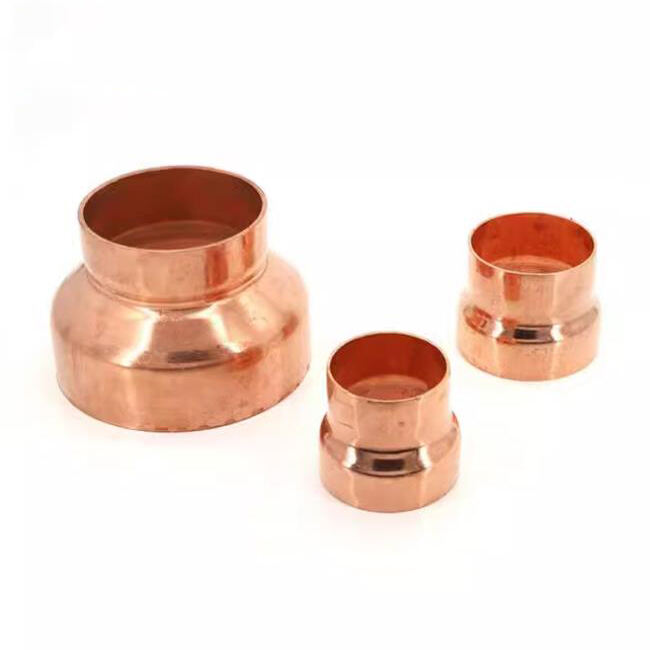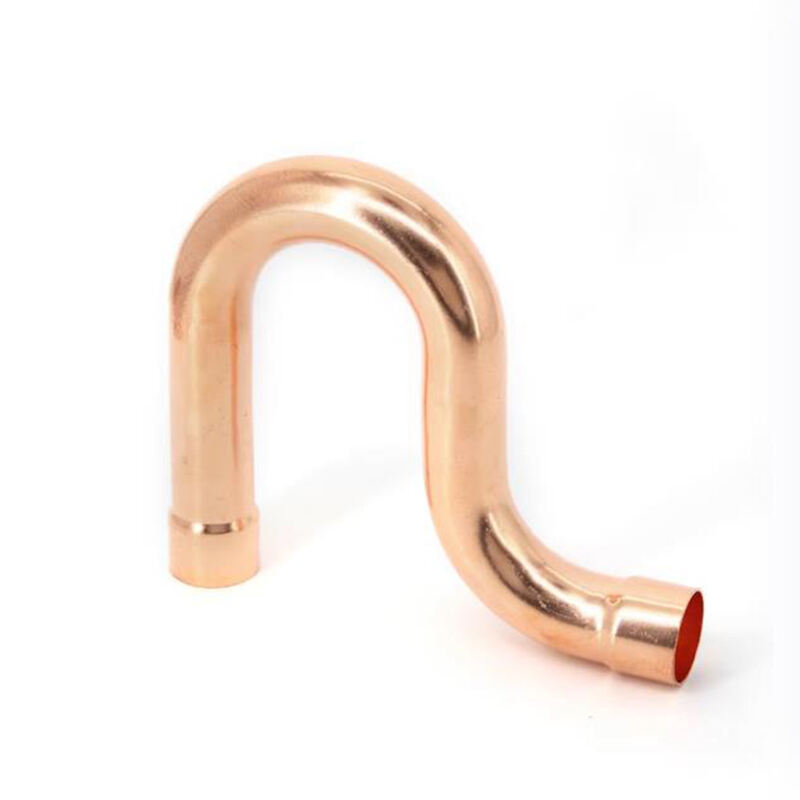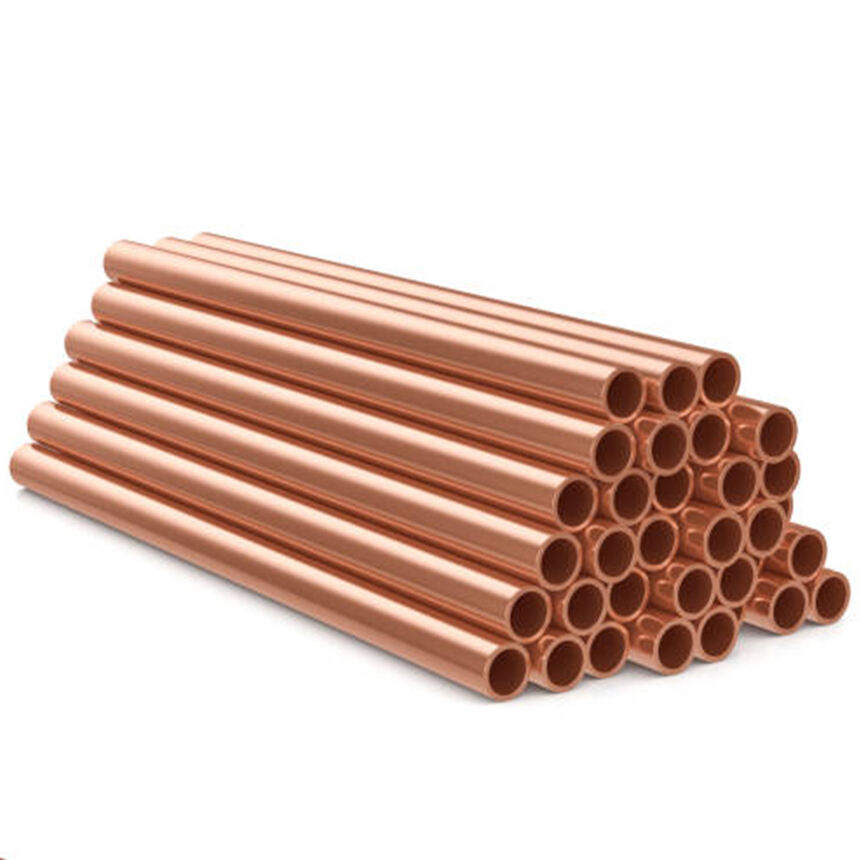The Role of Copper in Sustainable Infrastructure
Copper pipes play a key role in making water distribution systems more sustainable thanks to how durable they are and the fact that manufacturing them doesn't harm the environment much. Many plumbers prefer copper because these pipes last so long that they need replacing far less often than other materials, which cuts down on resource usage over time. What makes copper really stand out though is its natural ability to fight microbes. This helps keep drinking water safer from bacteria growth, meeting both public health standards and green building goals at the same time. The numbers back this up too. Cities that have switched to copper piping report replacement rates dropping by around 40% compared to older systems. Less frequent repairs mean saving money for municipalities while generating significantly less construction waste in landfills. All these factors point to why copper remains such a smart choice when designing infrastructure that needs to serve communities for decades without constant maintenance headaches.
Comparing Copper to Alternative Materials
Looking at copper pipes versus options like PVC and PEX, what really makes copper special is how long they last and their overall toughness. Most copper pipes will stick around for over 50 years before needing replacement, while those plastic ones usually don't make it past half that time. For plumbers and building owners focused on green solutions, this matters a lot because fewer replacements mean less waste down the road. Another big plus for copper is how well it handles temperature changes without cracking or warping. That kind of resilience works great in all sorts of weather conditions across different regions. Homeowners who install copper piping can feel confident knowing their system won't fail during extreme heat waves or freezing winters, which explains why so many professionals still recommend copper despite newer materials hitting the market.
Recyclability and Circular Economy Contributions
When it comes to sustainability in plumbing materials, copper really shines because it can be recycled completely without losing quality. The fact that copper is 100% recyclable makes it a real asset for companies trying to implement circular economy practices across their operations. Statistics from the Copper Development Association show something pretty remarkable too: around 80 percent of all copper made throughout history remains actively used somewhere right now. That kind of longevity speaks volumes about how environmentally friendly copper actually is when compared to other materials. Recycling old copper pipes and fittings helps cut down on the environmental damage caused by mining fresh copper ore, which means copper continues to be one of the best options available for building green infrastructure these days.
Corrosion Resistance for Long-Term Water Quality
Copper stands out in plumbing applications because it naturally resists corrosion, something really important when we want to keep water quality good over many years. Compare this to materials like PVC, which tends to break down eventually and might let bad stuff leak into our drinking water. Research indicates that homes with copper pipes generally have better tasting water too, since there's less chance of getting those unwanted chemicals from cheaper alternatives. The Food and Drug Administration along with Environmental Protection Agency actually back copper as safe for carrying drinking water through cities and towns across America. These organizations highlight how copper helps protect public health in our growing urban areas. People who install copper piping know they're getting something that will last generations, delivering clean water safely year after year without worrying about replacements or health risks down the road.
Thermal Conductivity in Heating/Cooling Systems
The amazing heat conducting properties of copper make it really well suited for heating and cooling needs in water distribution systems around buildings. Because copper transfers heat so effectively, both homes and businesses actually end up using less energy overall. Research indicates copper based systems tend to be about 20% more efficient when it comes to energy use than setups relying on materials that don't conduct heat as well. These kinds of efficiency gains translate into real money saved on utility bills while at the same time helping buildings become more environmentally friendly. After all, nobody wants to waste energy or pay extra for something that could be done better with smarter material choices.
Compatibility with Brass Fittings and Joints
When copper meets brass fittings, the connection tends to be much stronger and less prone to leaks, which means plumbing systems last longer overall. Most plumbers stick with brass fittings alongside copper pipes because they actually prevent something called galvanic corrosion that happens when incompatible materials touch each other. The pairing of brass fittings and copper pipes isn't just common anymore, it's pretty much standard across most residential and commercial installations these days. What makes this combo work so well? For starters, it keeps those pesky leaks at bay for years on end. Homeowners who want their plumbing to hold up through decades of use typically go with this combination since it stands up better to wear and tear compared to other options available in the market today.
Reducing Microplastic Contamination Risks
Switching to copper plumbing cuts down on microplastic contamination in water systems much better than options such as PEX piping do. Recent research points to growing worries about tiny plastic particles seeping into drinking water through plastic pipes, something that could harm our health and damage ecosystems over time. When municipalities install copper instead, they're actually taking meaningful steps toward providing residents with cleaner tap water across their neighborhoods. Copper doesn't break down easily over decades of service, so there's far less chance of it contributing to water pollution problems later on. For communities focused on building sustainable infrastructure, copper remains a smart investment decision when looking at both public safety concerns and broader environmental protection goals.
Integration with Renewable Energy Projects
Copper works great for plumbing, but it's actually pretty important for renewable energy stuff too, especially solar panels and wind turbines. When we put copper into these green energy projects, it helps move electricity around really well, which makes everything work better. Take New York City as an example they've been switching over to copper wiring in many buildings lately because it fits right in with their green energy plans. The whole package helps create smarter cities where people care about going green. Copper conducts electricity so much better than other materials, making it almost indispensable for all those fancy renewable tech gadgets. Cities that focus on using copper for both their pipes and power lines tend to hit their sustainability targets faster than those that don't think about this connection between old fashioned plumbing and cutting edge clean energy solutions.









